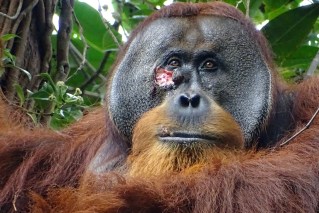NSW logging industry’s greater glider survey was done when the nocturnal animals were asleep

The greater glider is classified as endangered after bushfires wiped out a third of its habitat. Photo: WWF
The Forestry Corporation searched a NSW forest for greater gliders during the day, when the endangered animals would have been asleep.
The state-owned enterprise has defended its actions after a glider was recently found dead 50 metres from harvesting operations in the Tallaganda State Forest, east of Canberra.
The corporation plans to log what is one of the last strongholds for the imperilled species, which last year slipped from threatened to endangered.
But the Environment Protection Agency has slapped it with two successive 40-day stop work orders amid concerns over its efforts to preserve hollow den trees the gliders need to survive.
The watchdog says the corporation’s pre-harvest habitat survey identified just one den tree in the forest, a refuge that escaped the Black Summer fires.
‘What the requirements require’
It said it had no confidence the work was adequately conducted and the EPA’s own efforts have since identified 20 den trees, with 89 gliders sighted.
The corporation has defended its conduct on Friday, saying it has complied with all regulations and there is no requirement to carry out survey work at night, when nocturnal gliders are active.
“We’re working in line with what the requirements require us to do,” a spokeswoman said.
“It’s called a broad area habitat search, so they are searching for threatened fauna as well as flora.
“They do carry them out during the day because they might need to do some species identification of say a tree or a shrub … they are not just searching for a particular nocturnal species.”
She said den trees were strictly defined and it meant someone had to physically see a glider entering or leaving. She noted many more hollow trees that might in fact be den trees had been retained.
“(There are) 5400 trees hollow-bearing trees that are marked and protected and they are not going to be harvested.”
Three conservation groups recently went into the forest and found 17 den trees over a small area, but their survey work was done from dusk into the night.
Vital 50-metre difference
WWF-Australia, Wilderness Australia and South East Forest Rescue say hollow-bearing habitat trees aren’t protected in the same way den trees are.
Den trees must be given a 50-metre exclusion zone but habitat trees can be left standing in an entirely denuded landscape.
They’ve welcomed the action by the EPA but say it’s time for the NSW government to intervene.
“The Minns government must now find an appropriate way to permanently protect the habitat of this endangered species stronghold,” the groups said.
“We hope that Tallaganda State Forest, as a national biodiversity hotspot, will be protected in National Park in the near future.”
A spokesman for NSW Environment Minister Penny Sharpe said it was a regulatory matter for the EPA.
The EPA said the rules governing survey work did not prescribe all the actions required from the corporation to comply.
“However, it does require them to plan, implement and undertake forestry operations in a competent manner, including to find and protect all greater glider dens with 50-metre exclusion zones,” it said.
The matter remains under investigation.
-AAP








